Title
IRACON propagation measurements and channel models for 5G and beyond
Abstract
Several frequency bands and system architectures are proposed for 5G and beyond to meet the higher data rates for point-to-point communication and point-to-area coverage. In this paper, we present radio propagation studies and models developed in typical scenarios for massive antenna deployment and body area networks, in frequency bands below 6 GHz, building entry loss and clutter loss and vehicular communication, in the millimeter wave bands, and models in the Terahertz for 5G and beyond.
Keywords
Body Area Network, Building Entry Loss, Channel Model, Clutter Loss, COST IRACON, Massive MIMO, mm Wave, Terahertz, Vehicle to Vehicle
Authors
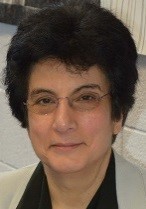 Sana Salous
Sana Salous
Durham University, UK
Sana Salous (SM’95) received the B.E.E. degree from the American University of Beirut, Beirut, Lebanon, in 1978, and the M.Sc. and Ph.D. degrees from Birmingham University, Birmingham, U.K., in 1979 and 1984, respectively. She was an Assistant Professor with Yarmouk University, Irbid, Jordan, for four years followed by one a year Research Fellowship at Liverpool University, Liverpool, U.K. She held a lectureship with the University of Manchester Institute of Science and Technology, Manchester, U.K., in 1989, where she was subsequently a Senior Lecturer and then a Reader. Since 2003, she has held the Chair in Communications Engineering at Durham University, Durham, U.K., where she is currently the Director of the Centre for Communication Systems. Her current research interests include radio channel characterization in various frequency bands ranging from skywave in the HF band to millimeter bands, the design of radar waveforms, and novel radio channel sounders and radar systems for radio imaging. Dr. Salous is a Fellow of the Institution of Engineering and Technology (FIET) and a Fellow of the International Union of Radio Science (FURSI). She was the Chair of Commission C on Radio Communication and Signal Processing Systems of URSI (2014-2017). She is the Editor in Chief of the journal of Radio Science, a publication of the American Geophysical Union.
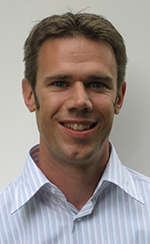 Fredrik Tufvesson
Fredrik Tufvesson
Lund University, Sweden
Fredrik Tufvesson received his Ph.D. in 2000 from Lund University in Sweden. After two years at a startup company, he joined the department of Electrical and Information Technology at Lund University, where he is now professor of radio systems. His main research interest is the interplay between the radio channel and the rest of the communication system with various applications in 5G systems such as massive MIMO, mm wave communication, vehicular communication and radio based positioning.
Fredrik has authored around 90 journal papers and 140 conference papers, he is fellow of the IEEE and was the recipient of the Neal Shepherd Memorial Award for the best propagation paper in IEEE Transactions on Vehicular Technology and the IEEE Communications Society best tutorial paper award.
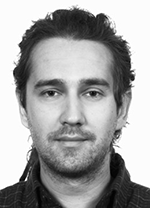 Kenan Turbic
Kenan Turbic
IST/INSEC-ID-University of Lisbon, Portugal
Kenan Turbic was born in Sarajevo, Bosnia and Herzegovina, in 1988. He received an MSc degree from the University of Sarajevo in 2011, and a PhD degree (Hons.) in Electrical and Computer Engineering from IST, University of Lisbon, in 2019. He is currently a postdoctoral researcher at the INESC-ID research institute, Lisbon, Portugal. His main research interests are wireless channel modelling, with a particular interest in Body Area Networks. He is actively participating in the COST Action CA15104 (IRACON), to which he has contributed with several technical documents and is serving as one of the Section editors for the final report book.
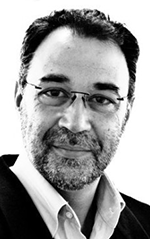 Luis M. Correia
Luis M. Correia
IST/INSEC-ID-University of Lisbon, Portugal
Luis M. Correia was born in Portugal, in 1958. He received the Ph.D. in Electrical and Computer Engineering from IST (University of Lisbon) in 1991, where he is currently a Professor in Telecommunications, with his work focused in Wireless/Mobile Communications in the areas of propagation, channel characterization, radio networks, traffic, and applications, with the research activities developed in the INESC-ID institute. He has acted as a consultant for the Portuguese telecommunications operators and regulator, besides other public and private entities, and has been in the Board of Directors of a telecommunications company. Besides being responsible for research projects at the national level, he has participated in 31 projects within European frameworks, having coordinated 5 and taken leadership responsibilities at various levels in many others. He has supervised more than 200 M.Sc./Ph.D. students, having edited 6 books, contributed to European strategic documents, and authored more than 500 papers in international and national journals and conferences, for which served also as a reviewer, editor and board member. Internationally, he was part of 36 Ph.D. juries, and 60 research projects and institutions evaluation committees for funding agencies in 10 countries and the European Commission. He has been the Chairman of Conference, of the Technical Programme Committee and of the Steering Committee of various major conferences, besides other several duties. He was a National Delegate to the COST Domain Committee on ICT. He was active in the European Net!Works platform, by being an elected member of its Expert Advisory Group and of its Steering Board, and the Chairman of its Working Group on Applications, and was also elected to the European 5G PPP Association. He has launched and served as Chairman of the IEEE Communications Society Portugal Chapter.
 Thomas Kürner
Thomas Kürner
Technische Universität Braunschweig, Germany
Thomas Kürner received his Dipl.-Ing. degree in Electrical Engineering in 1990, and his Dr.-Ing. degree in 1993, both from Univerity of Karlsruhe (Germany). From 1990 to 1994 he was with the Institut für Höchstfrequenztechnik und Elektronik (IHE) at the University of Karlsruhe working on wave propagation modelling, radio channel characterisation and radio network planning. From 1994 to 2003, he was with the radio network planning department at the headquarters of the GSM 1800 and UMTS operator E-Plus Mobilfunk GmbH & Co KG, Düsseldorf, where he was team manager radio network planning support responsible for radio network planning tools, algorithms, processes and parameters form 1999 to 2003. Since 2003 he is Full University Professor for Mobile Radio Systems at the Technische Universität Braunschweig. His working areas are indoor channel characterisation and system simulations for high-speed short-range systems including future terahertz communication system, propagation, traffic and mobility models for automatic planning and self-organization of mobile radio networks and vehicle-to-X communications. In 2012 he was a guest lecturer at Dublin City University within the Telecommunications Graduate Initiative in Ireland. He has been engaged in several international bodies He has actively contributed to the channel modelling document supporting the standardization of IEEE 802.11ad. He was the chair of IEEE 802.15.3d TG 100G, which developed the worldwide first wireless communications standard operating at 300 GHz. Currently he is chairing the IEEE 802.15 TAG THz , is the EU coordinator of the EU-Japan Project ThoR and the spokesman of the DFG Research Unit Meteracom on Metrology for THz Communications. Prof. Kürner is a member of the Board of Directors of the European Association on Antennas and Propagation (EurAAP) and from 2012 to 2017 he was the founding chair of the EurAAP WG Propagation.
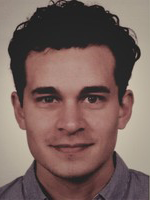 Diego Dupleich
Diego Dupleich
Technische Universität Ilmenau, Germany
Diego Dupleich received the Engineering degree (Hons.) in electronic engineering from Universidad Tecnológica Nacional, Paraná, Argentina, in 2009, and the M.S. degree (Hons.) in communications and signal processing from Technische Universität Ilmenau, Ilmenau, Germany, in 2013, where he is currently pursuing the Ph.D. degree in electrical engineering. From 2009 to 2010, he was an RF Specialist in satellite communications with Emerging Markets Communications. Since 2013, he has been with the Electronic Measurements and Signal Processing Group, Technische Universität Ilmenau, where he is currently involved in the millimetre-wave field. For his work on channel measurements and modelling, he received the Best Paper Award in Propagation at the 11th European Conference on Antennas and Propagation.
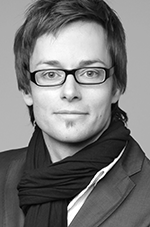 Christian Schneider
Christian Schneider
Technische Universität Ilmenau, Germany
Christian Schneider received his Diploma degree in electrical engineering from the Technische Universität Ilmenau, Germany in 2001. His research interests include multi-dimensional channel sounding, characterization and modelling for single and multi-link cases in cellular and vehicular networks at micro and millimeter wave bands. He is also active in adaptive space-time signal processing and passive coherent localisation. He received a best paper award at the European Wireless conference in 2013 and European Conference on Antennas and Propagation in 2017. He has authored more than 130 publications.He is currently pursuing the Dr.-Ing. degree with the Institute for Information Technology at the Ilmenau University of Technology.
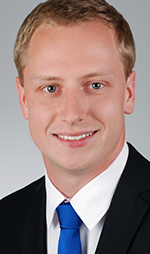 Daniel Czaniera
Daniel Czaniera
Technische Universität Ilmenau, Germany
Daniel Czaniera graduated in electrical engineering with specialization in mobile communications at the Technische Universität Ilmenau, Germany and received his M. Sc. degree in 2018. The focus of his research lies in the investigation of physical propagation effects in highly dynamic radio channels. Apart from that, he is also working on the derivation of suitable models for these kinds of channels. He is currently a Dr.-Ing.-candidate in the department of Electronic Measurements and Signal Processing at the Technische Universität Ilmenau. He received the Best Propagation Paper award at the 13th European Conference on Antennas and Propagation in 2019.